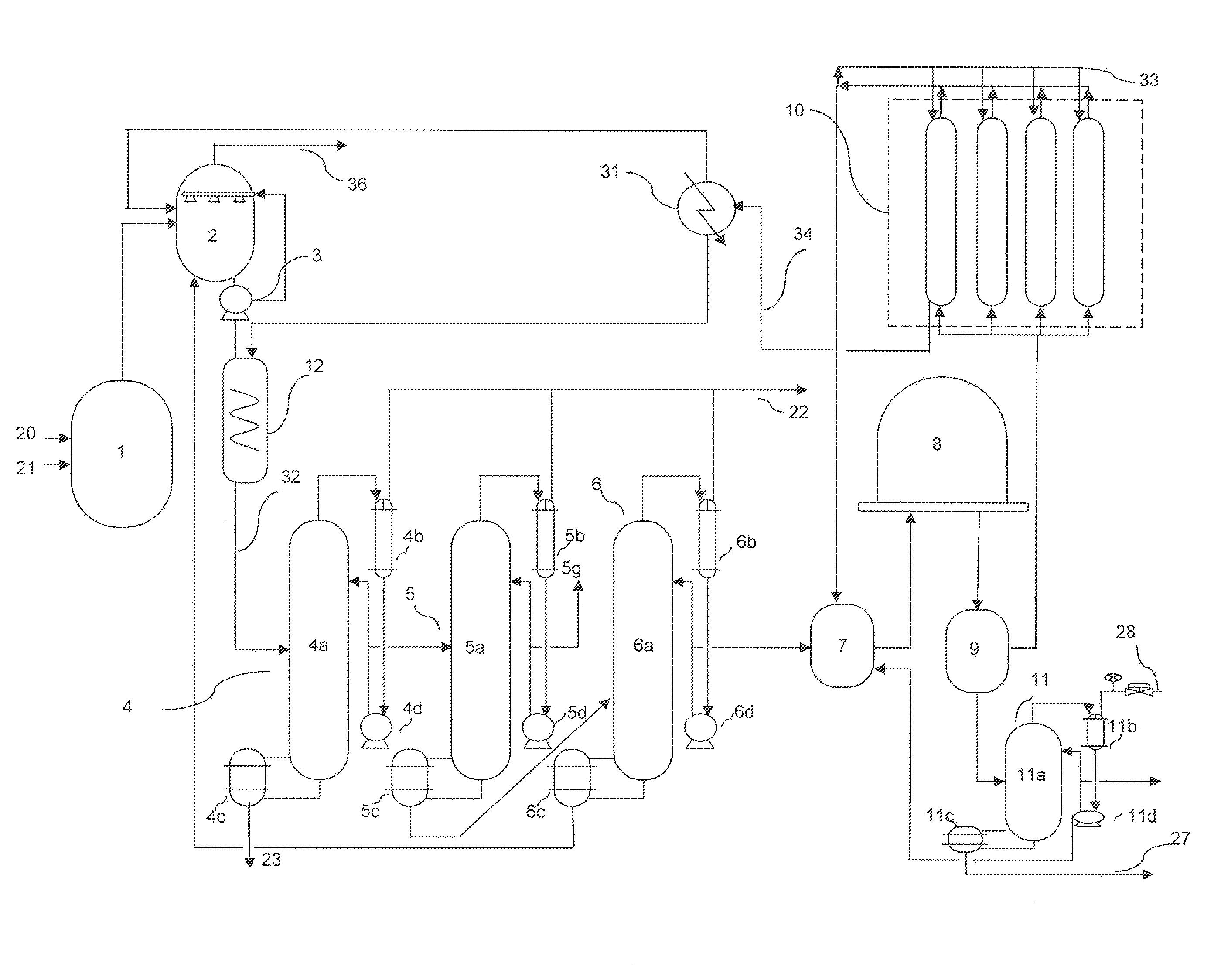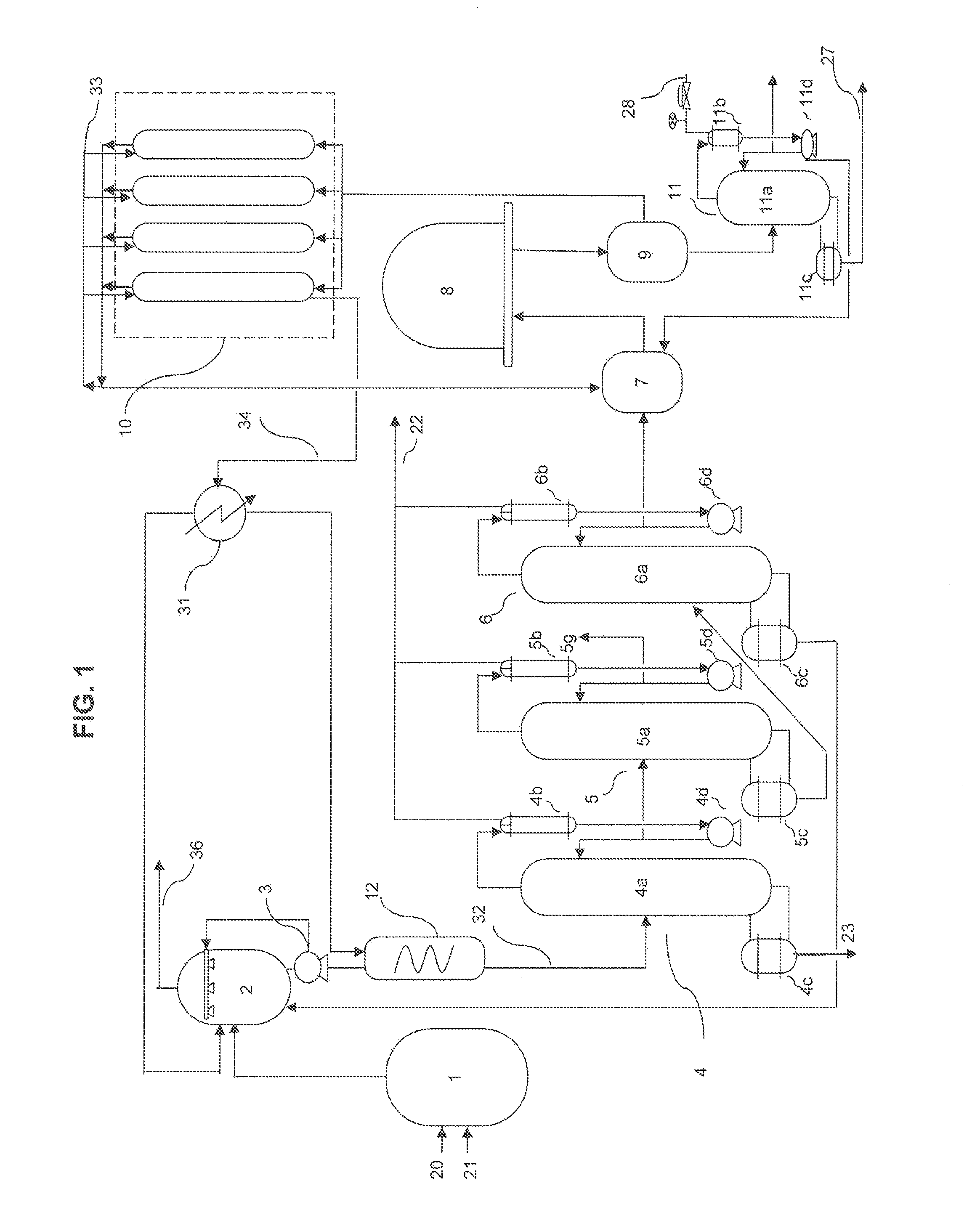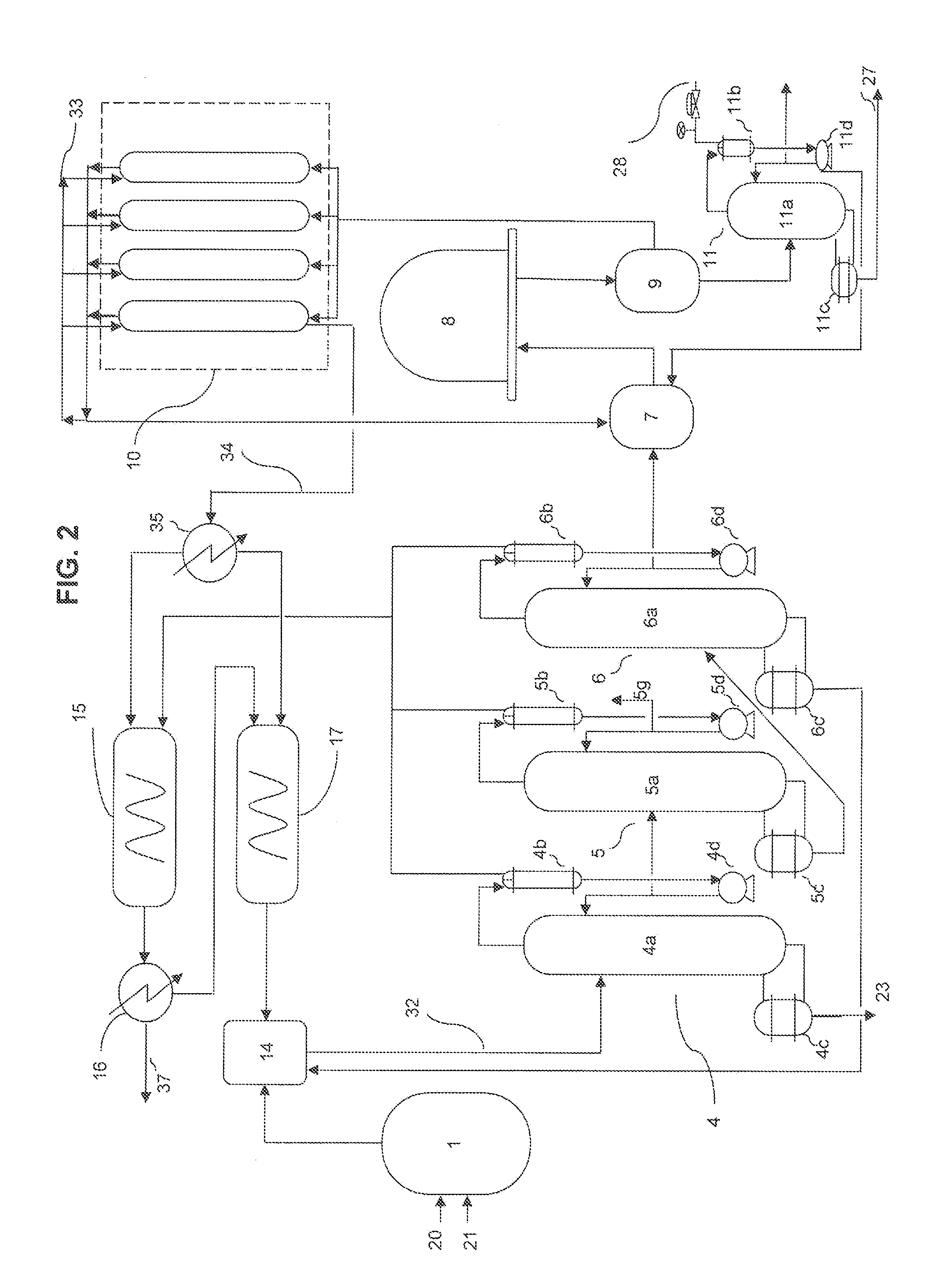Apparatus and method for producing polycrystalline silicon having a reduced amount of boron compounds by forming phosphorus-boron compounds
a technology of boron compounds and phosphorus, which is applied in the field of apparatus and a method for producing polycrystalline silicon having a reduced amount of boron compounds, can solve the problems of difficult separation of trichlorosilane and boron compounds, produced in the reaction, etc., and achieves the effects of reducing boron concentration, high boiling point products, and high boiling point adduct compounds
- Summary
- Abstract
- Description
- Claims
- Application Information
AI Technical Summary
Benefits of technology
Problems solved by technology
Method used
Image
Examples
Embodiment Construction
[0024]FIG. 1 shows a process flow diagram of the invention. This invention comprises a fluidized-bed reactor 1, a wash tower 2, a pump 3, distillation units 4-6, a vaporizer 7, a reactor 8, a condenser 9, an adsorption process 10, a distillation unit 11 for the condensate of the condenser 9, a chiller 31 and a mixer 12.
[0025]The fluidized-bed reactor 1 is for reacting metallurgical grade silicon powder (Me—Si) 20 of about 98% purity with hydrogen chloride (HCl) gas 21, based on reaction formula (3):
Me—Si+3HCl→SiHCl3+H2 (3).
[0026]As a result of the Me—Si and HCl reaction, a reaction gas is produced in the fluidized-bed reactor 1. The reaction gas includes TCS, STC, DCS and boron compounds. The typical yield of reactants after chlorination in the fluidized-bed reactor is approximately the following: TCS at 88 wt %, STC at 11.5 wt %, DCS at 0.5 wt % and boron at 3,000 to 6,000 ppbwt. More specifically, TCS is included at more than 80 wt %. In this embodiment, a fluidized-bed type reac...
PUM
| Property | Measurement | Unit |
|---|---|---|
| purity | aaaaa | aaaaa |
Abstract
Description
Claims
Application Information
 Login to View More
Login to View More - R&D
- Intellectual Property
- Life Sciences
- Materials
- Tech Scout
- Unparalleled Data Quality
- Higher Quality Content
- 60% Fewer Hallucinations
Browse by: Latest US Patents, China's latest patents, Technical Efficacy Thesaurus, Application Domain, Technology Topic, Popular Technical Reports.
© 2025 PatSnap. All rights reserved.Legal|Privacy policy|Modern Slavery Act Transparency Statement|Sitemap|About US| Contact US: help@patsnap.com



